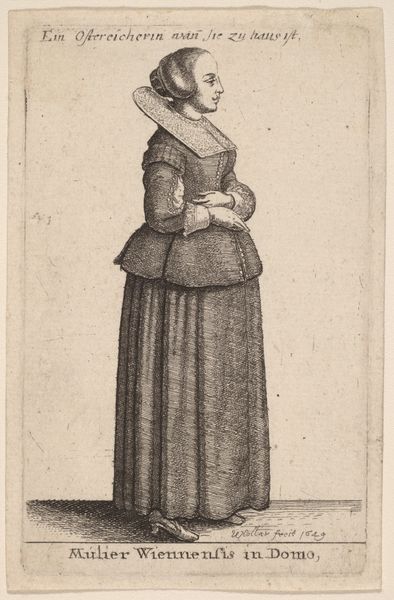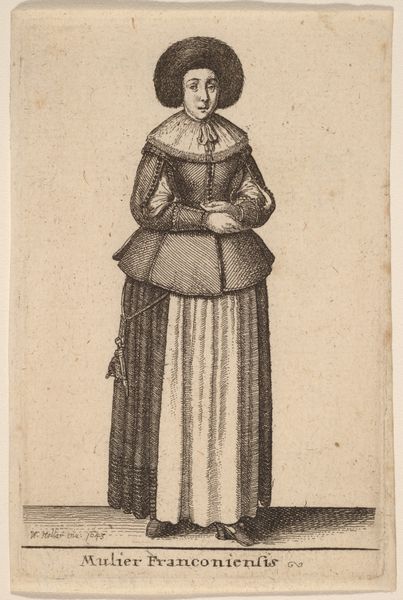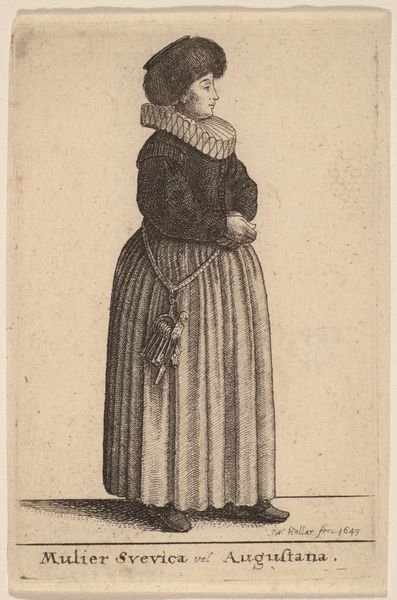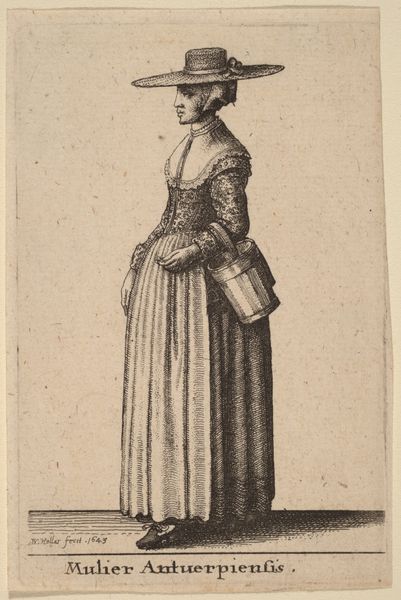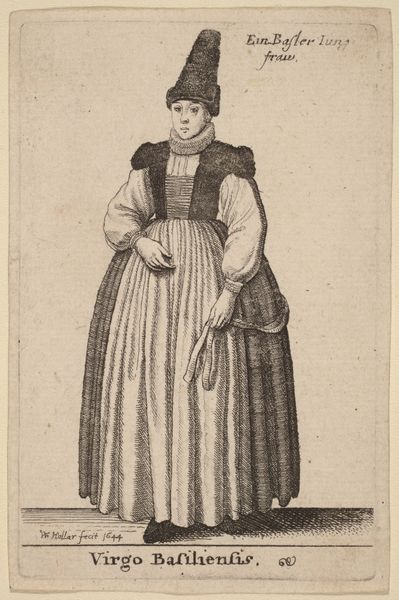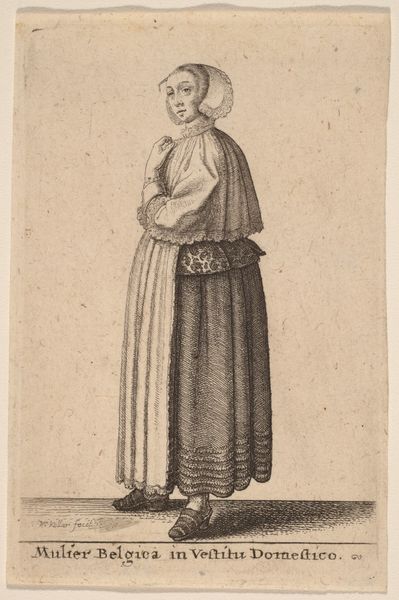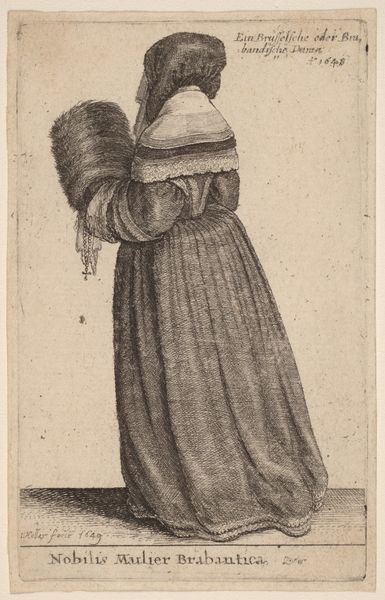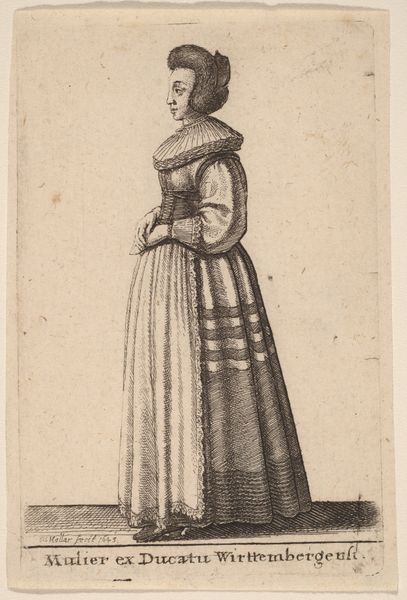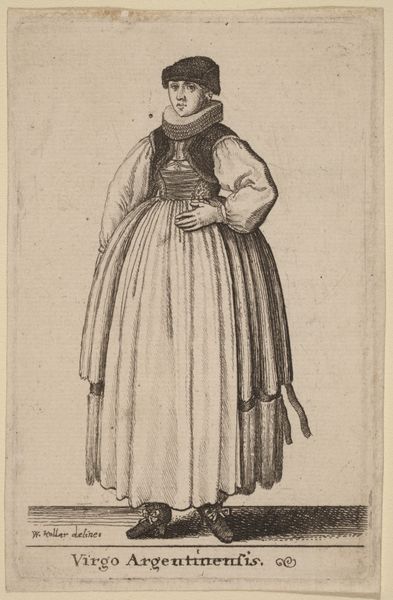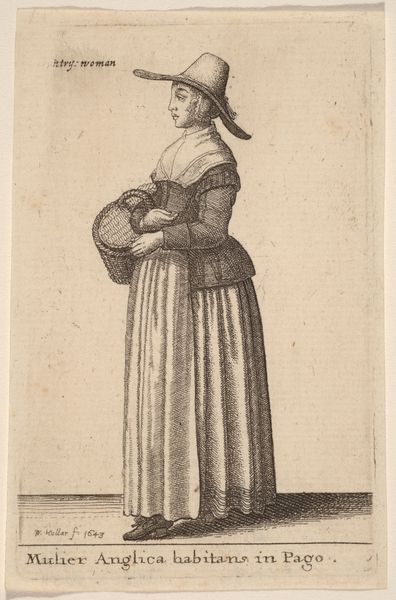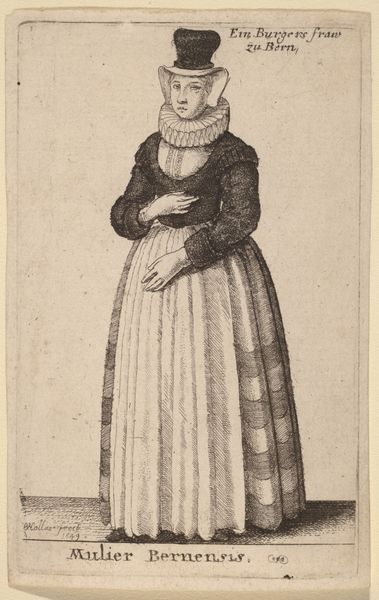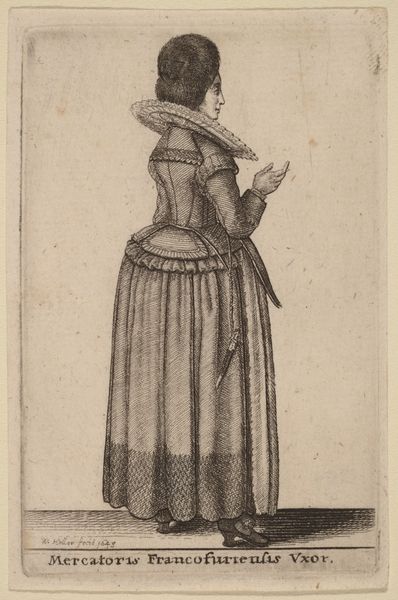
print, engraving
#
portrait
#
baroque
# print
#
figuration
#
engraving
Copyright: National Gallery of Art: CC0 1.0
Curator: What a strikingly sober portrait! Wenceslaus Hollar etched this image, titled "Mulier Generosa Anglica"—or "An English Gentlewoman"—in 1643. Editor: It does feel very somber. I immediately notice her hands clasped at her front, as if concealing or protecting something. The meticulous lines of the engraving highlight every fold and crease, adding to the overall weight of the piece. Curator: Hollar was known for his precise attention to detail, and that precision became his way to create a kind of anthropological record. This was made during the English Civil War, an unstable period with shifting social identities. Prints like this offered a way to catalogue and perhaps even control the visual representation of social status. Editor: It’s interesting to consider how dress functions as both representation and protection. Her attire is decidedly modest, and although she's identified as gentry, there's an almost puritanical denial of ornamentation. What does that reveal about societal pressures? Curator: Exactly! We need to see past mere physical likeness, seeing how codes were transmitted visually. Even the seemingly simple act of clasped hands tells a specific kind of psychological tale: perhaps submission, but maybe also resolution or an inward turning. Hollar's talent shows here is that she's both there, in the room with us, and psychologically unreachable. Editor: That tension is powerful. What really strikes me is how relevant these visual statements about identity still are. We read them through the same kind of political lens now as people surely did then, struggling to decode messages and assumptions embedded in these constructed visual images. Curator: Yes, and in many ways that intersectionality continues. Consider how images such as this reflect or influence concepts of power dynamics between genders in 17th-century English society. They set social guidelines, don’t they? Editor: They do, absolutely. It is through those visual impositions that we come to read what once was, but that can also provide warnings for our current path. Thank you for your astute observation. Curator: The pleasure was all mine.
Comments
No comments
Be the first to comment and join the conversation on the ultimate creative platform.
